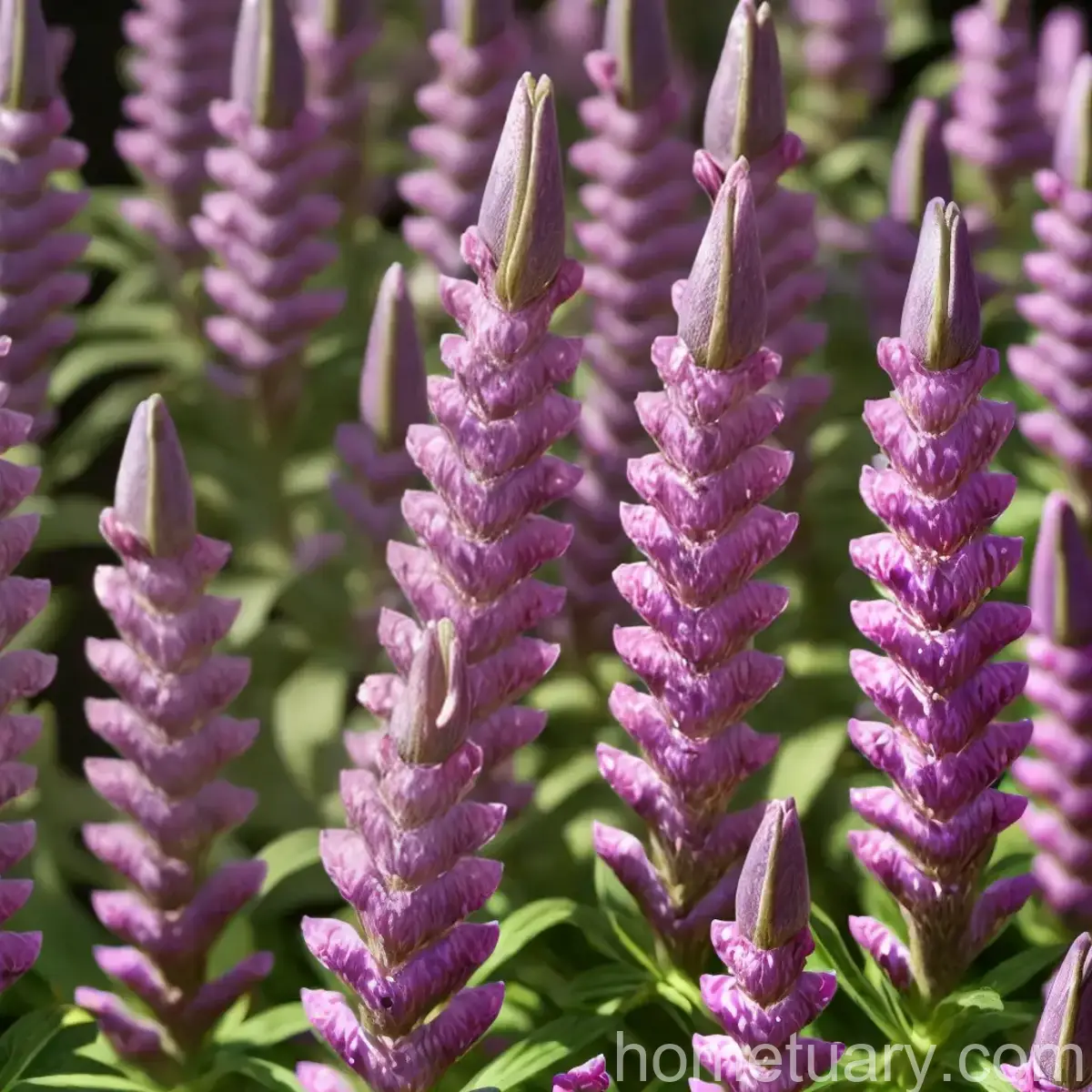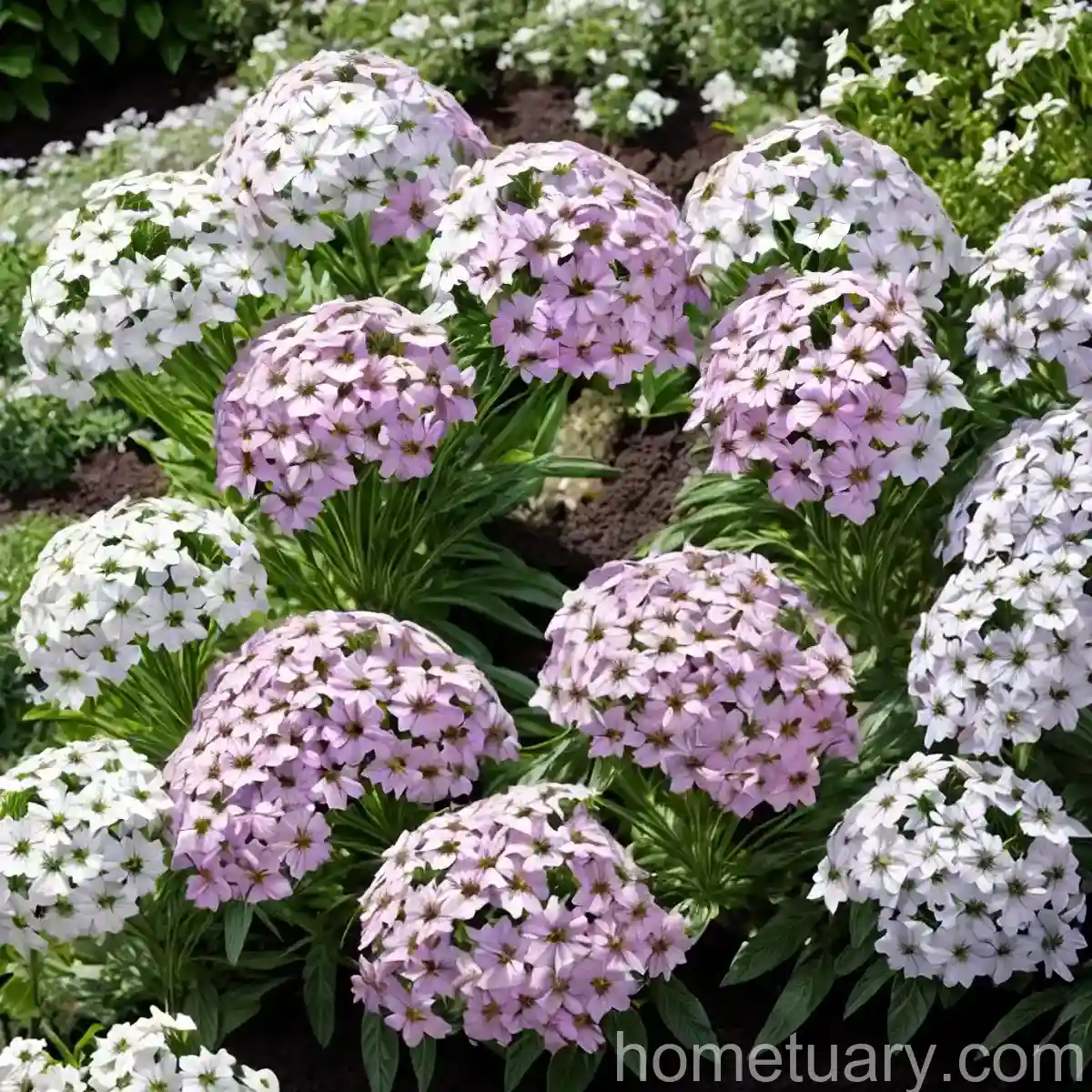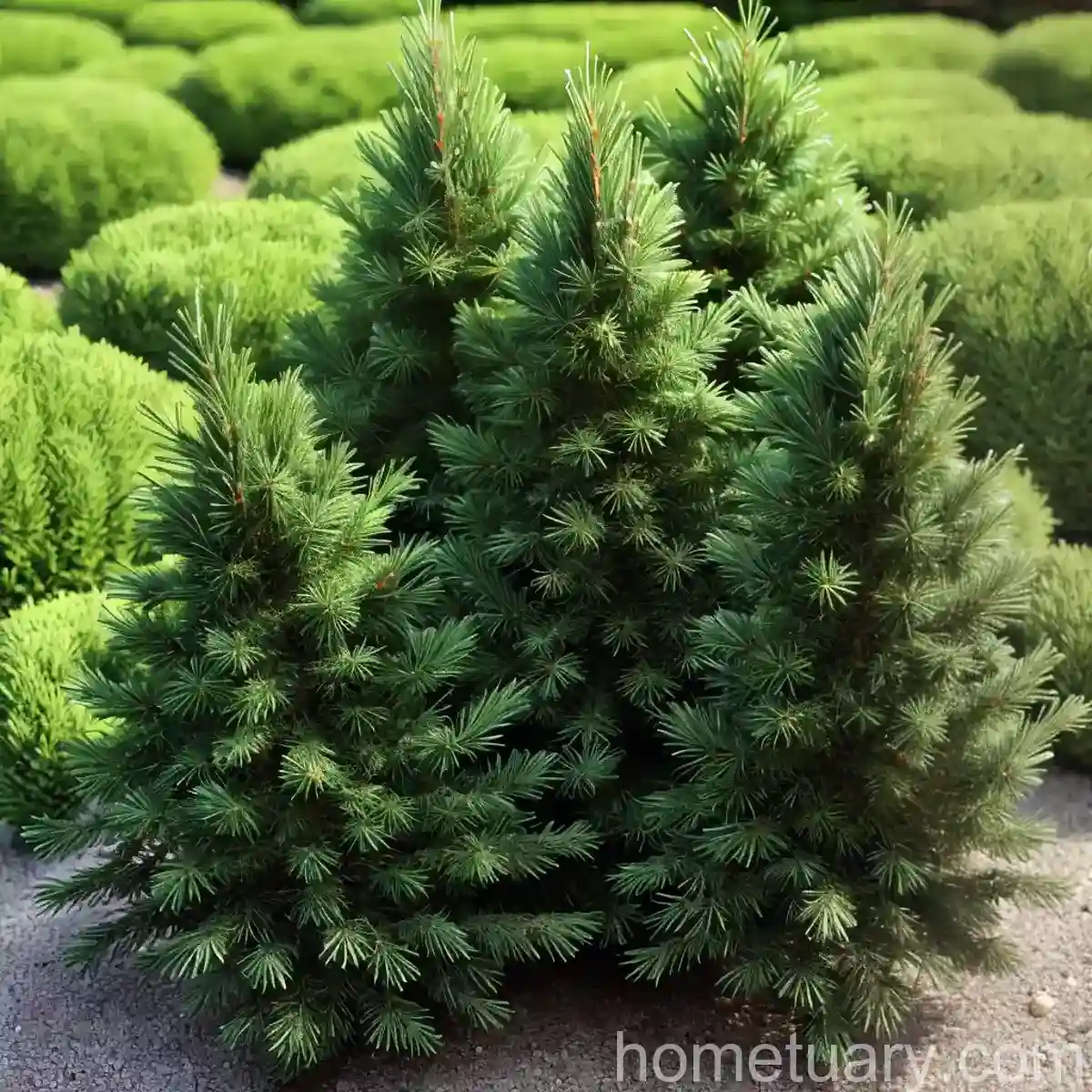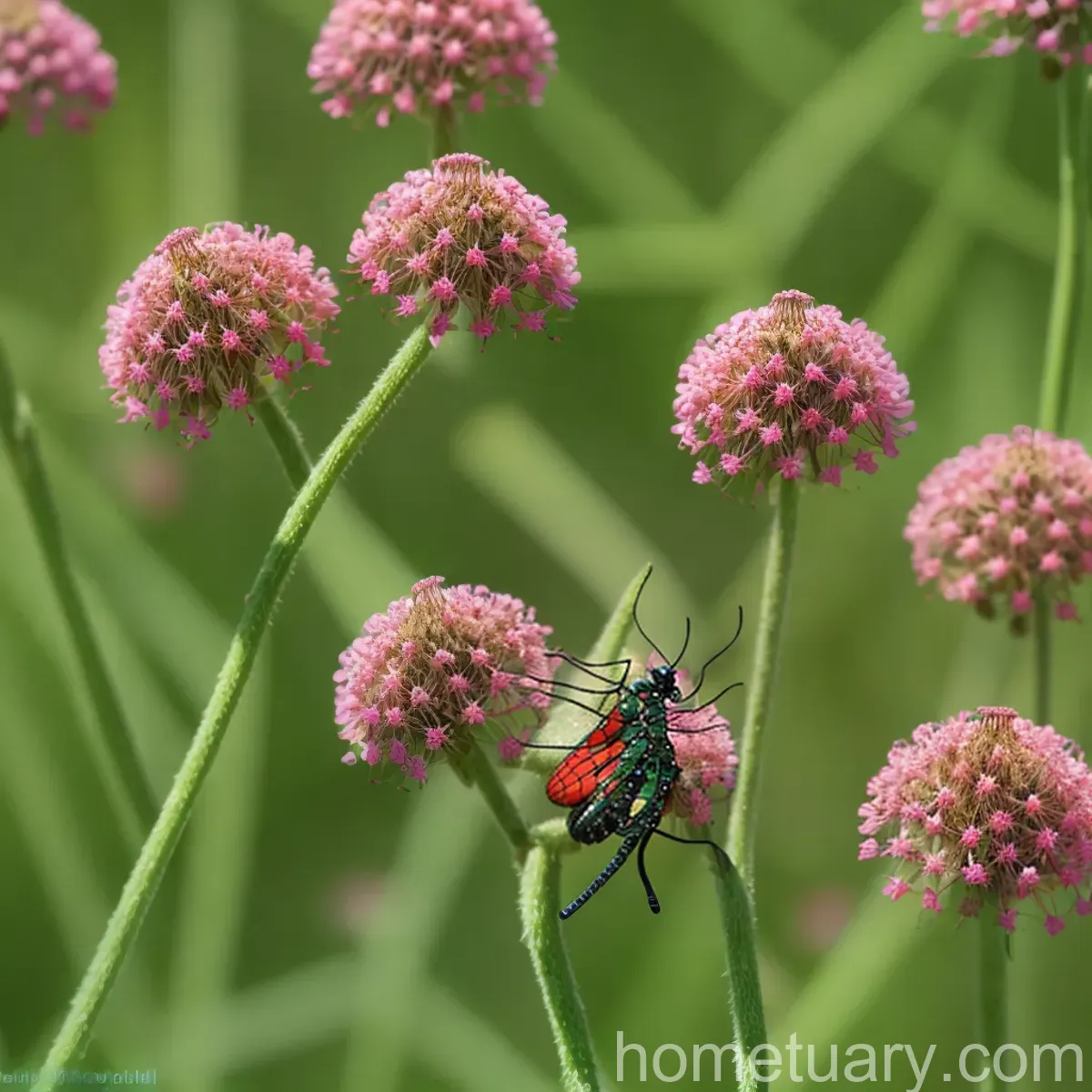Italian Parsley (Petroselinum crispum var. neapolitanum): A Complete Plant Care Guide
In the world of culinary herbs, Italian parsley (Petroselinum crispum var. neapolitanum) holds a place of high esteem, celebrated for its fresh, vibrant flavor and numerous health benefits. Its versatility in cooking and its ease of cultivation make it a favorite among both home gardeners and professional chefs. In this comprehensive guide, we will explore the various facets of Italian parsley, including its culture, uses, care requirements, common diseases, and pests. Let’s delve into the world of Italian parsley, uncovering its rich history, nutritional properties, and essential tips for successful cultivation.
What is Italian Parsley (Petroselinum crispum var. neapolitanum)?
Italian parsley, scientifically known as Petroselinum crispum var. neapolitanum, is a biennial herb that is primarily cultivated for its flavorful and aromatic leaves. Belonging to the Apiaceae family, Italian parsley is closely related to other well-known herbs such as cilantro and dill. It is native to the Mediterranean region and is a prominent ingredient in Mediterranean and Italian cuisines. Unlike its curly-leafed counterpart, flat-leaf Italian parsley features flat, deeply serrated leaves and has a more robust taste and fragrance.
Italian parsley is highly esteemed for its culinary uses, but it also has a long history of application in traditional medicine due to its medicinal properties. Rich in essential nutrients and bioactive compounds, Italian parsley offers a wide range of health benefits, making it a valuable addition to any diet.
Key Takeaways – Italian Parsley (Petroselinum crispum var. neapolitanum)
Before delving into the specifics of Italian parsley cultivation and care, let’s examine the key takeaways that will be covered in this comprehensive guide:
Culture
- Origins and historical significance of Italian parsley
- Culinary and medicinal uses of Italian parsley in Italian and Mediterranean regions
- Nutritional properties and health benefits of Italian parsley
Uses
- Culinary applications: Incorporating Italian parsley into various dishes
- Medicinal uses: Health benefits and traditional remedies using Italian parsley
- Aesthetic uses: Garnishing and decorative applications of Italian parsley
Water
- Watering requirements for Italian parsley
- Overwatering and underwatering symptoms
- Best practices for watering Italian parsley
Sunlight
- Light requirements for Italian parsley
- Significance of sunlight in leaf production and flavor enhancement
- Managing sunlight exposure for optimal growth
Fertilizer
- Nutrient needs of Italian parsley
- Choosing the right fertilizer for Italian parsley
- Fertilization schedule and application techniques
Soil
- Soil preferences for Italian parsley
- Soil composition and pH levels for healthy growth
- Soil amendment recommendations
Pruning
- Pruning techniques for Italian parsley
- Encouraging leaf production and preventing flowering
- Managing plant size and shape through pruning
Propagation
- Propagation methods for Italian parsley
- Seed starting and transplanting guidelines
- Dividing existing plants for propagation
Container Cultivation
- Growing Italian parsley in containers
- Choosing the right pot and soil mix
- Container care and maintenance tips
Popularity
- Popularity of Italian parsley in global cuisine
- Trending recipes featuring Italian parsley
- Consumer demand and market trends
Common Diseases
- Identifying and managing common diseases affecting Italian parsley
- Disease prevention and control strategies
- Understanding the impact of diseases on plant health
Disease Diagnosis
- Recognizing symptoms of diseases in Italian parsley
- Diagnostic tools and resources for disease identification
- Seeking professional assistance for accurate diagnosis
Common Pests
- Common pests that affect Italian parsley
- Integrated pest management techniques
- Natural and chemical pest control methods
Botanist’s Tips
- Expert tips for successful Italian parsley cultivation
- Addressing common challenges and plant care dilemmas
- Maximizing plant health and productivity through botanical insights
Fun Facts
- Entertaining and intriguing facts about Italian parsley
- Historical anecdotes and folklore surrounding Italian parsley
- Quirky trivia to expand your knowledge of this esteemed herb
Links to External Resources
- Curated list of resources for further exploration of Italian parsley cultivation, culinary uses, and medicinal applications
- External references to reputable sources for additional learning
Now that we have outlined the key areas of focus, let’s embark on an in-depth exploration of Italian parsley, equipping you with the knowledge and skills to cultivate this revered herb with confidence and expertise.
Cultivating Italian Parsley: Unveiling Its Rich Heritage and Culinary Significance
Origins and Historical Significance
Italian parsley, with its origins deeply rooted in the Mediterranean region, has been a staple in culinary traditions for centuries. The herb’s vibrant green leaves and robust flavor have contributed to its prevalence in the kitchens of numerous cultures, most notably in Italian and Mediterranean cuisines.
In Italian culinary traditions, Italian parsley serves as a foundational ingredient, imparting a fresh, herbal essence to a myriad of dishes. Its implementation in iconic Italian recipes such as gremolata, a zesty herb condiment featuring parsley, lemon zest, and garlic, highlights its indispensable role in enriching the flavor profile of traditional dishes.
Culinary and Medicinal Uses of Italian Parsley in Italian and Mediterranean Regions
Italian parsley has made an indelible mark in Italian and Mediterranean cuisines, where it is celebrated for both its culinary and medicinal properties. As a culinary herb, Italian parsley is prized for its ability to elevate the flavors of dishes, providing a distinct and refreshing element to an array of recipes.
Furthermore, Italian parsley boasts a significant presence in traditional medicine, where it is recognized for its diverse health benefits. From promoting digestion to supporting overall immune function, Italian parsley has been integrated into herbal remedies and infusions, showcasing its versatility beyond the realm of culinary applications.
Nutritional Properties and Health Benefits of Italian Parsley
Italian parsley is a nutritional powerhouse, containing an impressive array of vitamins, minerals, and antioxidants that contribute to its esteemed status as a health-promoting herb. Rich in vitamins A, C, and K, as well as essential minerals like iron and potassium, Italian parsley offers a spectrum of nutrients that support various aspects of human health.
Moreover, Italian parsley contains bioactive compounds, including flavonoids and volatile oils, which exhibit potent antioxidant and anti-inflammatory properties. These compounds not only contribute to the herb’s distinct flavor and aroma but also confer numerous health benefits, ranging from supporting cardiovascular health to aiding in detoxification processes within the body.
As we transition from examining the cultural and nutritional facets of Italian parsley, we will now delve into the specific care requirements essential for nurturing this herb to its fullest potential.
Italian Parsley: A Thorough Care Guide for Optimal Growth and Development
Watering Italian Parsley: Finding the Balance for Healthy Growth
Water is a critical element in the cultivation of Italian parsley, influencing the herb’s growth, leaf production, and overall wellbeing. Understanding the optimal watering practices for Italian parsley is paramount in promoting vigorous growth and ensuring the plant’s resilience against potential stressors.
Watering Requirements for Italian Parsley
Italian parsley thrives in moist, well-drained soil, necessitating consistent, yet regulated, watering to maintain ideal moisture levels. As a general guideline, it is recommended to water Italian parsley regularly, ensuring that the soil remains adequately moist without becoming waterlogged. Striking a harmonious balance in the soil’s moisture content is crucial in safeguarding the herb from incidences of dehydration or water saturation, both of which can impede its growth and vitality.
Overwatering and Underwatering Symptoms
Recognizing the symptoms associated with overwatering and underwatering is imperative in gauging the plant’s moisture needs and promptly addressing any imbalances. Overwatering can manifest through wilting due to root rot, while underwatering may lead to drooping and yellowing of the leaves. Observing the plant’s response to watering routines will facilitate the detection of irregularities and aid in implementing timely adjustments to optimize its growing conditions.
Best Practices for Watering Italian Parsley
To facilitate effective water management, it is advisable to water Italian parsley in the early morning to allow for adequate absorption and minimize the risk of fungal diseases. Furthermore, exercising care to water the soil directly, rather than the foliage, can mitigate the likelihood of foliar ailments and ensure that the plant’s root system receives the moisture it requires for sustained growth and development.
Sunlight: Illuminating the Path to Lush Italian Parsley Growth
As a sun-loving herb, Italian parsley thrives in well-lit environments, benefitting from adequate sunlight exposure to bolster its leaf production and flavor profile. Harnessing the positive effects of sunlight is essential in fostering robust growth and flavor development in Italian parsley plants.
Light Requirements for Italian Parsley
Italian parsley flourishes in full to partial sunlight, necessitating at least 4-6 hours of direct sunlight each day to thrive optimally. Positioning the herb in a location that receives ample natural light will support the production of lush, aromatic leaves, enhancing its culinary and aesthetic appeal.
Significance of Sunlight in Leaf Production and Flavor Enhancement
Sunlight plays a pivotal role in stimulating chlorophyll production within the leaves of Italian parsley, thereby fortifying their rich green hue and heralding the herb’s visual allure. Additionally, exposure to sunlight facilitates the synthesis of essential oils and aromatic compounds within the leaves, intensifying the herb’s flavor profile and contributing to its esteemed role in culinary endeavors.
Managing Sunlight Exposure for Optimal Growth
Strategic placement of Italian parsley in areas with favorable sunlight access is crucial for fostering strong, healthy plants. By monitoring the light distribution and ensuring consistent exposure to sunlight, it is possible to cultivate Italian parsley with robust foliage and enhanced flavor, accentuating its role as a versatile and impactful culinary herb.
Fertilizer: Nourishing Italian Parsley for Vibrant Growth and Flavor Enrichment
The nutrient requirements of Italian parsley are central to its growth and the development of its lush, aromatic leaves. Implementing a balanced and targeted fertilization regimen is instrumental in fortifying the herb’s nutritional profile and intensifying its flavor attributes.
Nutrient Needs of Italian Parsley
Italian parsley benefits from a steady supply of essential nutrients, including nitrogen, phosphorus, and potassium, to support its vegetative growth and flavor development. Striking an optimal nutrient balance is integral in safeguarding the herb’s robustness and enhancing its culinary merit.
Choosing the Right Fertilizer for Italian Parsley
Selecting a high-quality fertilizer with a balanced NPK (nitrogen, phosphorus, potassium) ratio is essential for providing Italian parsley with the necessary nutrients for sustained vigor and aromatic potency. Additionally, incorporating organic fertilizers, such as compost or well-decomposed manure, can impart valuable micronutrients and foster fertile, nutrient-rich soil conducive to the herb’s prosperity.
Fertilization Schedule and Application Techniques
Adhering to a regular fertilization schedule, typically applying a balanced fertilizer every 4-6 weeks during the growing season, can underpin the consistent provision of essential nutrients to Italian parsley. Employing caution to administer fertilizers evenly and avoiding excessive application is pivotal in preventing nutrient imbalances and safeguarding the herb’s overall health.
Soil: Establishing the Ideal Ground for Italian Parsley Flourishment
The composition and quality of the soil directly influence the growth, vitality, and flavor development of Italian parsley. Tailoring the soil environment to meet the herb’s specific preferences is fundamental in nurturing healthy, robust plants that exude vibrant aromatics and culinary appeal.
Soil Preferences for Italian Parsley
Italian parsley thrives in well-drained, loamy soil with a rich organic content, offering a congenial milieu for its root system to proliferate and acquire vital nutrients. Ensuring that the soil possesses good drainage properties is imperative in averting waterlogged conditions that can compromise the herb’s health and vigor.
Soil Composition and pH Levels for Healthy Growth
Maintaining a neutral to slightly alkaline soil pH in the range of 6.0-7.0 provides the optimal foundation for Italian parsley’s growth and overall wellbeing. Analyzing the soil composition and implementing corrective measures to attain the desirable pH range can elevate the herb’s capacity to assimilate nutrients and thrive in its environment.
Soil Amendment Recommendations
Incorporating organic matter, such as compost or well-rotted manure, into the soil can enhance its fertility and structure, fostering a favorable habitat for Italian parsley to flourish. Additionally, supplementing the soil with a balanced, slow-release fertilizer can fortify its nutrient content, bolstering the herb’s growth and flavor attributes.
Pruning: Nurturing Italian Parsley for Abundant Leaf Production
Pruning serves as a crucial practice in managing the growth and vibrancy of Italian parsley, contributing to its leafy abundance and aromatic potency. Employing effective pruning techniques is fundamental in fostering robust plant growth and optimizing the herb for culinary use.
Pruning Techniques for Italian Parsley
Regularly trimming and harvesting the outermost leaves of Italian parsley promotes continual leaf production and prevents the herb from bolting or flowering prematurely. By judiciously pruning the plant, particularly in the early stages of growth, it is possible to encourage a dense, leafy canopy replete with fresh, aromatic foliage.
Encouraging Leaf Production and Preventing Flowering
Pruning facilitates the redirection of the plant’s energy toward leafy expansion, curtailing the onset of flowering and prolonging the herb’s harvestable duration. This approach not only yields an abundant supply of flavorful leaves for culinary use but also safeguards the herb from entering the reproductive phase prematurely.
Managing Plant Size and Shape through Pruning
Tactfully pruning Italian parsley enables the control of its size and form, rendering it more compact and aesthetically pleasing. By judiciously removing wayward or excessively long stems, it is feasible to sculpt the plant into a desirable shape, enhancing its visual appeal while fostering optimal leaf development.
Propagation: Propagating Italian Parsley for Continuity and Abundance
The propagation of Italian parsley through strategic methods serves as a means to perpetuate its presence in the garden and secure a continuous supply of fresh, aromatic foliage. Familiarizing oneself with effective propagation techniques is instrumental in fostering the herb’s proliferation and availability for culinary use.
Propagation Methods for Italian Parsley
Italian parsley can be propagated through both seed starting and division of existing plants, affording multiple avenues to cultivate new specimens and perpetuate the herb’s presence in the garden. Selecting a propagation method that aligns with the grower’s preferences and resources can facilitate the seamless expansion of Italian parsley within the garden environment.
Seed Starting and Transplanting Guidelines
Commencing the propagation process with high-quality seeds and providing them with optimal germination conditions is critical for initiating robust growth in Italian parsley. Subsequently, transplanting the seedlings into a suitable growing environment, characterized by fertile, well-drained soil and adequate sunlight, fosters their development into vigorous, productive plants.
Dividing Existing Plants for Propagation
Dividing established Italian parsley plants enables the generation of new specimens with minimal effort, accentuating the herb’s accessibility and perpetuation in the garden. By carefully dividing the plant into manageable segments and transplanting them into conducive growing sites, it is possible to augment the herb’s presence and enhance its utility.
Container Cultivation: Growing Italian Parsley with Constrained Brilliance
The cultivation of Italian parsley in containers offers a versatile and space-efficient means to foster the herb’s growth, affording opportunities for urban and confined-space gardening. Maximizing the potential of container cultivation necessitates adherence to principles tailored to the specific needs of potted Italian parsley plants.
Growing Italian Parsley in Containers
Selecting spacious, well-drained containers with adequate depth for Italian parsley facilitates the accommodation of its root system and supports its overall vigor. Choosing the appropriate container size and material is pivotal in providing the herb with a favorable growing environment conducive to robust growth and leaf production.
Choosing the Right Pot and Soil Mix
Opting for porous containers that facilitate optimal aeration and water drainage creates a conducive setting for Italian parsley’s growth and development. Incorporating a quality potting mix with good drainage and moisture retention properties further fortifies the growing medium, offering a supportive habitat for the herb’s containerized cultivation.
Container Care and Maintenance Tips
Employing judicious watering practices and implementing a regular fertilization regimen are essential in nurturing Italian parsley within containers. Furthermore, situating containers in locations that receive sufficient sunlight and monitoring their exposure to environmental elements will aid in sustaining the herb’s health and productivity.
As we continue our comprehensive exploration of Italian parsley, we will now shift our focus to its widespread appeal and dominance in global cuisines, as well as the most effective strategies for addressing common diseases and pests that may compromise its vitality.
Unveiling the Ubiquitous Popularity of Italian Parsley and Addressing Common Plant Ailments
Popularity: The Ubiquitous Presence of Italian Parsley in Global Cuisine
Italian parsley occupies a prominent position in global cuisines, featuring in a diverse array of recipes and culinary traditions that showcase its remarkable flavor and aromatic attributes. From enriching Mediterranean and Italian dishes to finding utilization in worldwide culinary practices, Italian parsley’s pervasive popularity is a testament to its universal appeal and culinary significance.
Trending Recipes Featuring Italian Parsley
Italian parsley stars in a multitude of trending recipes that span various culinary genres, ranging from classic Italian and Mediterranean dishes to innovative, contemporary creations. Its capacity to infuse dishes with a nuanced, refreshing flavor makes it a sought-after ingredient in culinary circles, eliciting adulation from chefs and home cooks alike.
Consumer Demand and Market Trends
The robust consumer demand for Italian parsley underscores its enduring relevance in the culinary landscape, reflecting its indispensability in a spectrum of culinary applications. The sustained popularity of Italian parsley heralds its enduring stature as a foundational herb that enriches the gastronomic experiences of individuals worldwide.
Common Diseases: Identifying and Managing Ailments Affecting Italian Parsley
Italian parsley, like all plants, is susceptible to a range of diseases that can compromise its health and vitality if left unchecked. Acquainting oneself with common diseases affecting Italian parsley is paramount in preempting their impact and implementing effective management strategies to preserve the herb’s vigor.
Disease Prevention and Control Strategies
Implementing proactive measures to avert the onset and spread of diseases is instrumental in fortifying Italian parsley against potential ailments. Adhering to good cultural practices, such as maintaining proper sanitation and providing optimal growing conditions, can mitigate the risk of diseases and bolster the herb’s resilience.
Understanding the Impact of Diseases on Plant Health
Recognizing the implications of diseases on the overall health and productivity of Italian parsley underscores the imperative of vigilance and timely intervention. Through comprehensive disease management, it is possible to safeguard the herb from setbacks and foster its sustained vigor within the garden environment.
Disease Diagnosis: Recognizing Symptoms and Seeking Accurate Identification
Developing proficiency in diagnosing and identifying diseases affecting Italian parsley enables prompt intervention and the implementation of targeted treatment measures to counteract ailments. Familiarizing oneself with the symptoms associated with prevalent diseases is integral in facilitating accurate disease diagnosis and the formulation of effective remedial courses of action.
Diagnostic Tools and Resources for Disease Identification
Utilizing diagnostic tools and resources, such as reputable gardening guides and university extension services, can aid in confirming disease diagnoses and elucidating suitable remedies. Availing oneself of expert insights and guidance can empower growers to address diseases with precision and safeguard Italian parsley from adverse repercussions.
Seeking Professional Assistance for Accurate Diagnosis
In instances of uncertainty or complexity in disease identification, consulting with professional plant pathologists or horticulturists can provide invaluable clarity and guidance. Accessing professional expertise ensures accurate disease diagnosis and enhances the probability of successful resolution through targeted treatment interventions.















